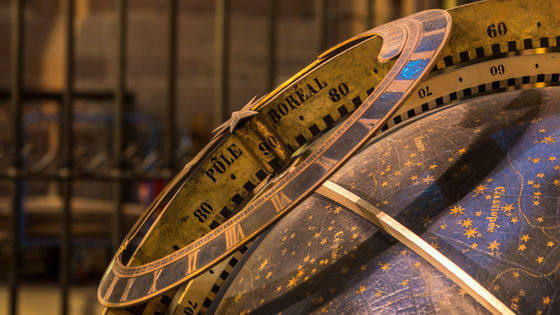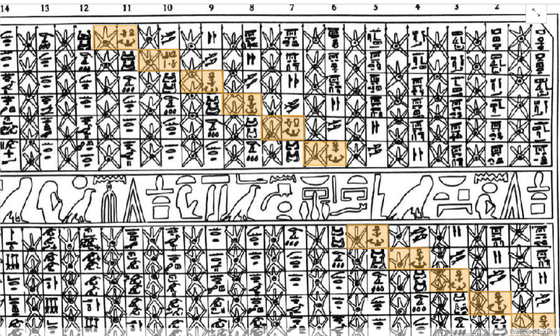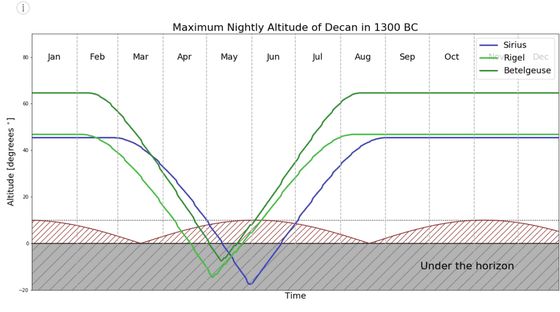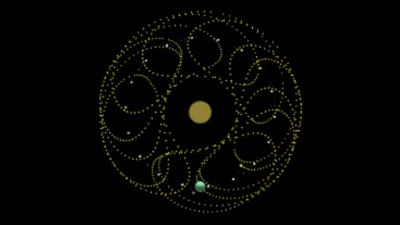What approach did the Ancient Egyptians take to astronomy?

In the ancient world, there were no modern telescopes that could observe the universe, but there were also regions where astronomy was developed through fairly advanced surveying and calculation methods. J. Luna Zagorac, a postdoctoral researcher at
In Search of Lost Time
https://storymaps.arcgis.com/stories/eea3fbc9c05b40948563ffd0ccfab59d

It is said that ancient Egyptian culture had a close relationship with astronomical observation, as shown by the 'Orion Theory,' which states that the three great pyramids of Giza in Egypt roughly correspond to the positions of the three stars of Orion . However, there are no records remaining on what specific observations were made at the time. Therefore, from the perspectives of Egyptology and astronomy, Dr. Zagorac proposed ideas for the data that should be collected and the approach to analyzing it.
Zagorac first analyzed the ancient Egyptian 'Diagonal Star Table.' A diagonal star table is a 'list of stars' drawn on the inside of ancient Egyptian coffins and tombs. According to the Ancient Egyptian Astronomy Database , most of the diagonal star tables found in the past have been found in coffins made in the early Middle Kingdom around 2000 BC. The diagonal star table lists stars diagonally and records the appearance times of certain star groups called ' decans .' It is believed that the diagonal star table was used for calendars and astrology and was written on coffins because it was necessary for funerals.

Some researchers believe that the decanal tables were simply tables showing the ideal configuration of the night sky, but in a 2014
Some of the decans shown in the diagonal star catalogs have been found to correspond to familiar star groups such as Sirius and Orion, but software analyses of the action of stars moving across the sky have not been able to match the movement of the decans in the diagonal star catalogs with the actual action of the stars.
To analyze how the ancient Egyptians viewed the movement of the decans, Zagorac wrote a piece of code called 'decanOpy' that calculates the positions of the stars and returns them in a format that is convenient for plotting and mapping. decanOpy is available on GitHub.
GitHub - lunazagor/decanOpy: Repository for decanOpy code, using AstroPy to track the movement of Ancient Egyptian asterisms called decans.
https://github.com/lunazagor/decanOpy
decanOpy takes the name of a decan and the year and month BC of its placement and generates a list of coordinates including the altitude and direction of the decan, as well as the altitude and direction of the sun.
Below is a graph showing Sirius (blue), Rigel (light green), and Betelgeuse (dark green) as observable in Egypt in 1300 BC. The horizontal axis is the moon, and the vertical axis is altitude. The stars cannot be observed when they are below the mountains and gray horizon shown in the red zone.

According to Zagorac, a good way to map stars is with still image maps, so you can't capture the essential movement of the decan. On the other hand, software such as Stellarium , which can create planetariums, can capture the movement beautifully, but it seems that it can't access and analyze numerical data such as star coordinates. Therefore, an effort called 'D3-Celestial' is underway to combine geographic data structures with 3D visualization libraries to create a beautiful and manipulable night sky. D3-Celestial can only see the coordinates of new stars since 2011, but Zagorac says that by combining it with the data output by decanOpy, it may be possible to recreate the ancient night sky.
Related Posts:
in Science, Posted by log1e_dh







